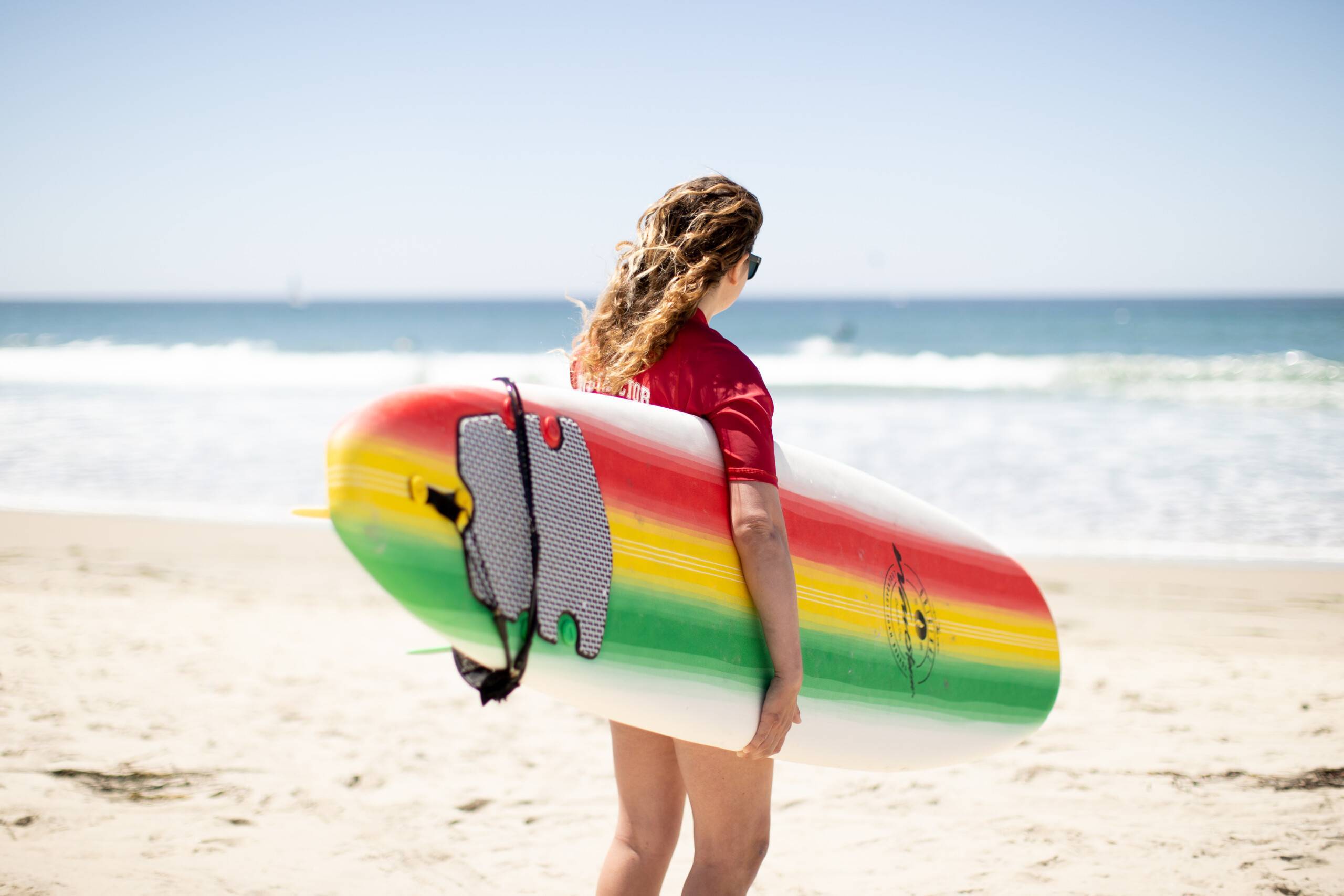Surfing techniques are essential skills that surfers use to ride waves effectively, maintain balance, and control their surfboards. Here are some fundamental surfing techniques to get you started:
- Paddling: Paddling is a critical skill for getting out to the lineup (the area where waves break) and catching waves. Proper paddling technique involves lying on your board, extending your arms forward, and cupping your hands to pull water towards you. Kicking your feet also helps propel you through the water.
- Popping Up: When you catch a wave, you need to quickly transition from paddling to a standing position. This is called “popping up.” Here’s how to do it:
- From the paddling position, place your hands on the board near your chest.
- Push yourself up with your arms while simultaneously swinging your back foot around and planting it on the tail of the board.
- Your front foot should come forward, and you should end up in a crouched or standing position with your feet shoulder-width apart.
- Stance: Your stance on the surfboard is crucial for balance and control. Most surfers use a “regular” (left foot forward) or “goofy” (right foot forward) stance. Your lead foot should be angled diagonally across the board, and your weight should be centered.
- Reading Waves: Understanding how to read the waves is essential for choosing the right waves to catch. Look for signs like wave height, shape, and where it’s breaking. A good understanding of wave patterns is crucial for catching and riding waves effectively.
- Trimming and Steering: Once you’re on the wave, you’ll need to control your board’s direction. To turn, you can shift your weight and apply pressure to one side of the board while using your arms for balance. To trim (maintain speed and direction), you’ll move your body forward or backward on the board.
- Duck Diving (for Shortboards): If you’re riding a shortboard, you’ll need to learn to duck dive to get through oncoming waves. This involves pushing the front of your board underwater as a wave approaches to minimize resistance.
- Turtle Roll (for Longboards): On longboards, it’s more common to use a turtle roll technique to go through waves. This involves flipping your board upside down and holding onto the rails to allow the wave to pass over you.
- Bottom Turn: A bottom turn is a key maneuver for generating speed and setting up for more advanced moves. To perform a bottom turn, you’ll shift your weight and carve a turn along the bottom of the wave.
- Top Turn and Cutback: These are maneuvers that allow you to change direction while riding the wave. A top turn involves turning at the top of the wave face, and a cutback is a smooth, controlled turn that redirects your board towards the wave’s power source.
- Tube Riding: Riding inside the tube (barrel) of a wave is a more advanced technique. It requires precise positioning, balance, and timing to stay in the curl of the wave.
- Kickouts and Exiting Waves: At the end of your ride, you’ll need to safely exit the wave. Depending on the wave and conditions, you can perform a kickout or simply ride the wave until it peters out.
These are some of the basic surfing techniques that every surfer should master. Keep in mind that surfing is a sport that takes time and practice to become proficient, and it’s essential to prioritize safety and respect for the ocean and other surfers.











